Introduction to Inclusive Education
What is Inclusive Education?
Cardiff University recognises Hockings’ (2010, p1) definition of inclusive education which ‘refers to the ways in which pedagogy, curricula and assessment are designed and delivered to engage students in learning that is meaningful, relevant and accessible to all. It embraces a view of the individual and individual difference as the source of diversity that can enrich the lives and learning of others.’
Inclusive Education is a dynamic process requiring institution-wide commitment to a systematic transformation of the culture, processes and practices of the university, overcome barriers to the presence, participation, achievement and experience of all students, and to account for and celebrate the rich diversity of the learning community.
Inclusivity is central to our purpose as a university, with our strategy, ‘Our Future, Together’ clearly stating our mission to offer an excellent educational experience for students of all backgrounds and experiences.
Our approach to Inclusive Education: the Cardiff University Inclusive Education Framework
We have developed a university-wide framework to facilitate and support schools and departments to embed inclusive education within our educational provision.
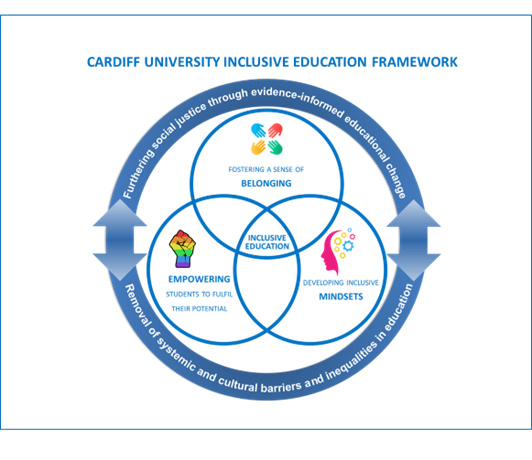
Key Principles
Central to our approach is our commitment to furthering social justice through evidence-informed educational change and the removal of systemic and cultural barriers and inequalities in education.
Higher education is often advocated to be a way to promote social justice and equity in society. However, substantial research suggests that higher education can also reinforce societal inequity through organisational approaches, and teaching and learning practices (Parson and Ozaki 2020). We can see this in the disparities in the experience and outcomes of different student groups. For example:
- Pupils eligible for free school meals (an indicator of socioeconomic status) are much less likely than other pupils to go into higher education, and much more likely to drop out before the start of their second year (Bolton and Lewis July 2024).
- White UK students are more likely to be awarded a First or a 2:1 for their degree than UK students of all other ethnicities, even when prior attainment is controlled for (UUK 2022).
- Only 36% of disabled students who have had any support approved by their university have all that support put in place (Disabled Students UK 2023)
- A high proportion (more than 42 per cent) of respondents reported hiding or disguising that they are LGBT at university because they were afraid of discrimination (Bachmann and Gooch 2108).
We also see EDI issues emerge frequently in media stories.
It is important to acknowledge that we are not immune to the problems faced by the sector and this inequity exists here in Cardiff University too.
It is also important to acknowledge that the causes of the disparities are complex, and whilst they may in part be due to wider societal issues, it is vital that as a University, both individually and collectively, we play our part in addressing these inequalities.
Nelson Mandela said: Education is the most powerful weapon you can use to change the world’
Rowan (2018) argues that ‘Education, truly, is the practice of freedom.’ She argues that:
- Education can change lives: educational experiences and outcomes impact directly upon high-stakes variables such as rates and forms of employment/unemployment; physical and mental health; social and emotional relationships; risk-taking behaviour and, of course, financial and physical security. Patterns of success and failure remain tied to variables including gender, cultural background, language, ability, and socio-economic status.
- Education never has been, and never can be, a neutral act (Giroux, 2010: 719). Education’s transformative potential is not always (nor even usually) realised in ways that advantage the full population. For many people across the world, education has served, directly and indirectly, as a mechanism for social reproduction rather than for any form of social transformation. Some groups of people have been denied access to even the most basic of education, or educated in ways that sought to position them into pre-determined, acceptable roles linked to the differences among us.
- University educators are confronted with an unavoidable challenge, as they are faced with a myriad of choices every day, and these choices have consequences for our students, our colleagues and ourselves. Our decisions should reflect not only the most immediate, or pressing demands on our time, but also (and more importantly) an understanding of, and commitment to, the transformative potential of higher education.
In striving to ensure social justice in Cardiff University, and aiming to remove the structural and cultural barriers in education, our evidence-informed approach incorporates:
- Use of pedagogic research and scholarship
- Accurate maintenance of data on the presence, participation, achievement and experience of students
- Monitoring, reviewing and measuring the impact of developments in inclusive education.
We have developed an Inclusive Education enhancement model to support programme teams and/or Schools to reflect upon and map your inclusive practice, with a set of reflection questions to aid discussion.
Dimensions of Inclusive Education
Our Cardiff University Inclusive Education Framework identifies the following three dimensions which together will drive our work to fulfil our commitments to furthering social justice through evidence-informed educational change and the removal of systemic and cultural barriers and inequalities in education.
Inclusive education flourishes in a culture which recognises and celebrates diversity to develop a sense of belonging for all staff and students: “one's personal belief that one is an accepted member of an academic community whose presence and contributions are valued” (Good et al. 2012). Our three areas of focus to help foster a sense of belonging are:
- Recognising and celebrating the diverse university community, and enabling students to see themselves represented in the curriculum
- Challenging the hidden curriculum and providing for students through the learning journey
- Actively seeking, listening and responding to all voices
The Future Generations Act 2015 aims for ‘a society that enables people to fulfil their potential no matter what their background or circumstances’. Inclusive education at Cardiff University will support all students to achieve their potential through three key areas of focus relating to the principles and practices of inclusive learning and teaching:
- Providing learning that is authentic, meaningful and relevant by recognising the needs and perspectives of all learners, and designing for all
- Supporting all students to fully participate in learning activities
- Enabling all students to demonstrate their abilities, skills and knowledge
An inclusive community considers the challenges to belonging and achievement inherent in traditional and elitist practices and strives to overcome them through identification of barriers and “addressing wider concerns about facilitating social justice and bringing about equity” (Stentiford and Koutsouris 2020), supporting students to become active agents in the development of inclusion. We seek to develop inclusive mindsets through three key areas of focus:
- Drawing on the diversity of the community to enrich the learning experience
- Articulating inequalities and privilege including critiquing understandings of the origins of subject knowledge
- Inspiring students to become champions of inclusivity, equipping them with the skills to foster and support inclusive environments
Our framework acknowledges that there is no simple nor single solution to inclusivity, and is influenced by number of different areas of focus, such as:
Universal Design for Learning (UDL)
The Equality Act 2010 requires anticipatory design, and findings on inclusion in extensive research suggest that the solution is to design universally for learning, to enable the agency and meet the needs of the majority of students, and to ensure they are empowered to fulfil their potential (see Lawrie et al.’s systematic review of the literature). The following video provides an introduction to UDL, and you can also find out more on our separate UDL page.
Culturally sustaining pedagogy
Culturally sustaining pedagogy acknowledges the importance that representation and identity play in the facilitation of education. When we acknowledge the diversity of students and consider how race, culture, and language could affect students' learning then learning and teaching practice is enhanced. By incorporating a range of learning strategies to address multiple perspectives, values, entry points, and opportunities for acquiring and demonstrating knowledge, education can amplify the benefits of diversity.
Eight competencies for culturally responsive teaching (Kwak 2020)
- Recognise and redress bias in the system.
• Draw on students’ culture to shape curriculum and instruction.
• Bring real-world issues into the classroom.
• Model high expectations for all students.
• Promote respect for student differences.
• Collaborate with the community.
• Communicate in linguistically and culturally responsive ways.
• Reflect on one’s cultural lens
Diversifying the curriculum
A diverse curriculum allows all students to see and be seen in design, pedagogies and assessment practices. Diversifying the curriculum is defined as the process of identifying, challenging and revising learning and teaching practices including reading lists, case studies, teaching activities, terminology, representation, assessment questions, teaching materials, evaluation and research strategies. Diversifying the curriculum is driven by the goal of restoring epistemic justice and enables students to see themselves in the curriculum, promoting a more inclusive and equitable environment. (University of Aberdeen 2023)
Decolonising the curriculum
“Decolonising the curriculum interrogates the ongoing impact of legacies of colonisation and imperialism on knowledge production. A decolonial approach concerns itself with deconstructing existing hierarchies, in favour of drawing on multiple knowledge systems/ways of knowing in order to integrate a range of perspectives, with a particular focus on amplifying the voices currently underrepresented in the curriculum” (UAL 2023: 3).
Decolonising is not about deleting knowledge or histories that have been developed in the West or colonial nations; rather it is to situate the histories and knowledges that do not originate from the West in the context of imperialism, colonialism and power and to consider why these have been marginalised and decentred (Arshad 2021)
Anti-racist pedagogy
“The only way to undo racism is to consistently identify it and describe it–and then dismantle it.” (Kendi 2019)
Anti-racist pedagogy is used as a term, rather than curriculum, to acknowledge that this work goes beyond the classroom. It aims to actively confront and dismantle racism within education, and is not just about incorporating diverse voices and racial content into the curriculum, but critiquing both how we teach, and our constructs of knowledge. It is the process of ongoing critical self-reflection, learning and improvement to reframe the way we think about curricula through an anti-racist lens, to transform and cultivate a space for everyone to feel safe.
What do the students say?
We worked with a range of Undergraduate, Postgraduate, international and home students with multi-faceted identities, backgrounds and experiences from across Cardiff University. Throughout the pages you will find videos, perspectives and quotes related to the different dimensions of the framework.
Map of Topics
An important first step in exploring the dimensions of inclusive education further, is to recognise the diversity of our student cohorts, as understanding who our learners are can enable us to reflect upon how we can best teach and support them whilst they are studying with us.
The Diversity of our Student Cohorts
Higher Education is more diverse than it has ever been. As we can see in the graph below, participation in Higher Education of UK domiciled people has risen dramatically since 1950, when less than 5% of the population went to University. This expansion of the higher education system to approximately 50% of school and college leavers has resulted in much greater student diversity.
This, in part, has also been driven by the widening access and participation agendas in all the UK nations, and equality legislation. At the same time internationalisation agendas have led to increased student mobility into UK higher education, rising from 226, 270 in 2012/3 to 314,790 in 2021/2, thus comprising 23.8% of the UK student population in that year (Universities UK 2023). In combination, these societal trends have led to greater diversity in our university community.
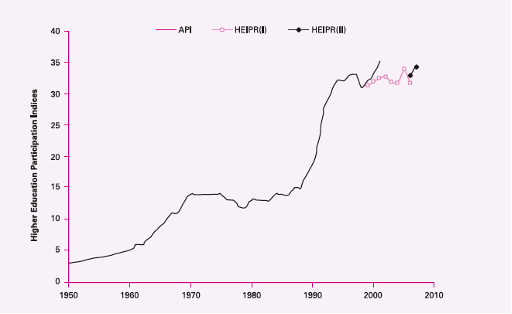
Figure 1: Higher Education Participation rates in the UK 1950-2010 (TES 2013)
It is important to understand, respond to, and celebrate the rich diversity of our students and this “requires attention to the complex, dynamic, and intersecting identities that all learners and teachers bring to the pedagogical experience” (Lawrie et al. 2017).
In thinking about diversity we adopt a broad definition, utilising Thomas and May’s (2010) conceptualisation of four broad dimensions of diversity by which all students (and staff) may differ: educational, dispositional, circumstantial and cultural.
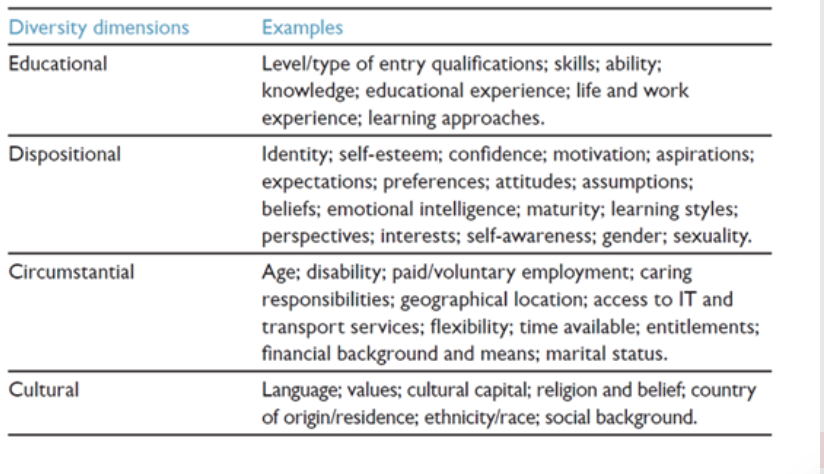
Figure 2: Dimensions of Diversity (Thomas and May 2010)
Whilst some of these characteristics are recognised in the Equality Act 2010 as protected, and some may be eligible for additional support from particular university services (such as disability), they all require us to consider the design of our teaching and our practices, to ensure all students have an equitable experience.
The Equality Act (2010) requires us to be anticipatory in our educational provision: therefore, we cannot wait until a student presents with a particular learning need or characteristic. Rather, we must design our adjustments from the outset, to cater for the majority of needs.
So how do we use an evidence-informed approach to understand who our learners are, and provide learning opportunities that are authentic, meaningful and relevant to all? Understanding the characteristics of Cardiff University students can help, and therefore, being aware of the data can help us realise the scale of diversity in our classrooms.. Cardiff University data on diversity is available to staff here.
Who are our Students
The changing landscape of Higher Education has made it more significant than ever to reflect on our practice in order to meet the needs of the diverse student population (Mathesion 2015). Knowledge of the diverse, intersectional identities of our students is fundamental to how we design, teach and assess our curriculum. When acknowledging and understanding the diversity of our students and anticipating the barriers that students may face whilst at university, we ensure we are providing learning opportunities that are authentic, relevant, and meaningful for all .
A theme that has underpinned research is the importance of understanding the diverse characteristics of your student body by engaging with relevant and up to date data in order to address the educational disparities that exist within the higher education sector.
Applying evidence informed approach based on the diverse characteristics of our students ensures we are driven by accurate data rather than outdated assumptions we may have of our students, their backgrounds, cultures and experiences. When we place the students at the centre of the learning, we create a curriculum that represents, responds to and reflects the diversity of all of our students, not just certain groups or characteristics.
In addition to understanding and responding to who our students are, it is important for us to also understand the experiences and outcomes of our diverse student body so that we can take action to address disparities that exist. For example, a lot of attention within the sector has focused on ethnicity awarding gaps, as there are persistent disparities in the proportion of ethnic minority students being awarded first or 2:1 degrees compared to white students, and understanding the evidence and analysing the data is a key recommendation in terms of closing these gaps (UUK, 2019, 20212) .
We have therefore been working to enhance our data reporting, to help us better understand our students and inform our practice.
To find out how to access and navigate our data at Cardiff University click here (staff only).
Using personas to develop your understanding of students
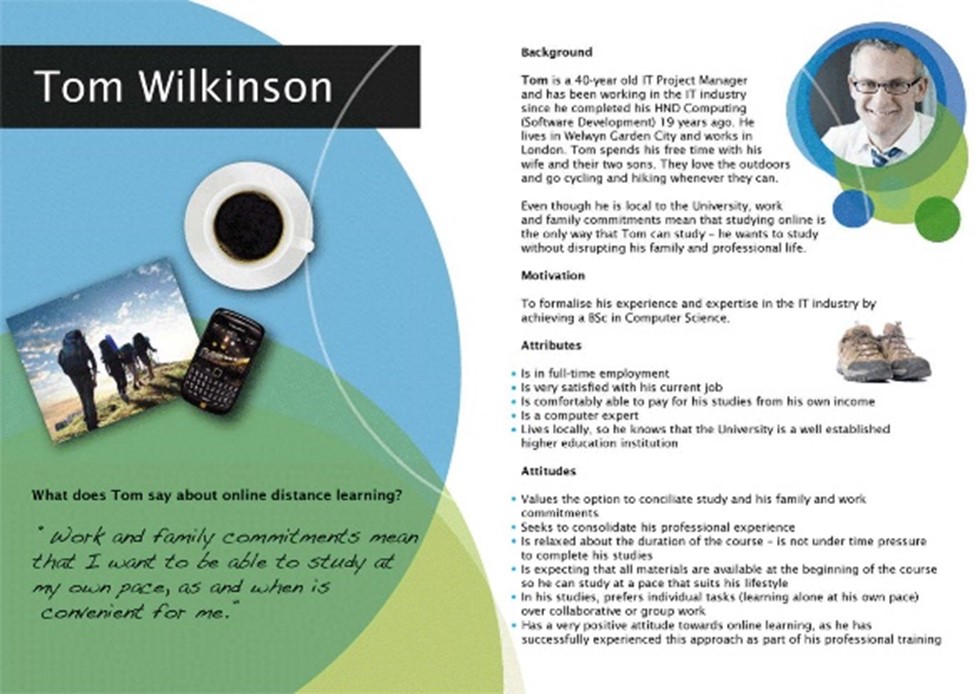
Personas are archetypes that characterise the needs, goals, technical experience, accessibility requirements and other personal characteristics of larger groups of people (Lilley, Piper and Attwood 2015). Although previously often used as part of information systems and learning technology development, the creation of rich, inspiring student profiles or personas, by teaching staff can provide colleagues with an enhanced understanding of the student population, and identify key characteristics to be taken into account during the student lifecyccle and the teaching cycle of design, delivery, assessment and evaluation.
To find out more about Personas, access this Xerte learning resource:
Recording of this page
Where next?
Workshops
You can also develop your understanding of Inclusive Education by attending workshop sessions that relate to each topic. These workshops can be taken in a live face-to-face session, if you prefer social interactive learning, or can be completed asynchronously in your own time, if preferred. You can find out more information on workshops, and the link to book is here.
Bespoke School Provision
We offer support for Schools on Inclusive Education, through the Education Development service. This can be useful to address specific local concerns, to upskill whole teams, or to support the programme approval and revalidation process. Please contact your School’s Education Development Team contact for more information.
Map of Topics
Below is a map of the toolkit and workshop topics, to aid your navigation. These will be developed and added to in future iterations of this toolkit.
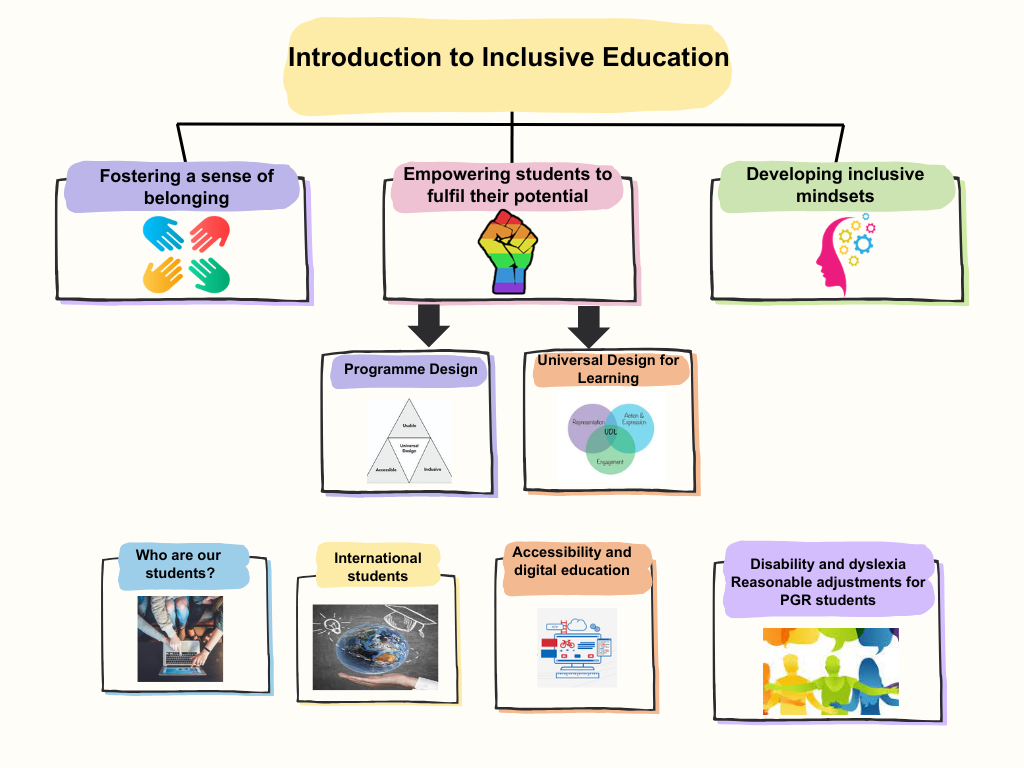
You’re on page 2 of 8 Inclusivity theme pages. Explore the others here:
1.Inclusivity and the CU Inclusive Education Framework
3.Fostering a sense of belonging for all students
4.Empowering students to fulfil their potential
5.Developing Inclusive Mindsets
6.Universal Design for Learning
8.Disability and Reasonable adjustments
Or how about another theme?
References
References
Hinchcliffe, T. 2021 The Hidden curriculum of Higher Education [Online]. Available at : https://www.advance-he.ac.uk/knowledge-hub/hidden-curriculum-higher-education [Accessed 30/8/22]
Hockings, C. 2010. Inclusive Learning and Teaching in Higher Education: A Synthesis of Research. York: Higher Education Academy. Available Online
Lawrie, G., Marquis, E., Fuller, E., Newman, T., Qui, M., Nomikoudis, M., Roelofs, F., & van Dam, L. (2017) Moving towards inclusive learning and teaching: A synthesis of recent literature. Teaching and Learning Inquiry 5 (1)
Parsons, L and Ozaki, C.C. 2020. Teaching and Learning for Social Justice and Equity in Higher Education.Switzerland: Springer Available online [link: https://librarysearch.cardiff.ac.uk/permalink/44WHELF_CAR/b7291a/cdi_askewsholts_vlebooks_9783030449391 ]
Robertson, Susan. (2010). Globalising UK Higher Education. Globalisation, Societies and Education. 8. 191-203. 10.1080/14767721003776320.
TES 2013 Now we are 50. Online: https://www.timeshighereducation.com/features/participation-rates-now-we-are-50/2005873.article
Thomas, L. and May, H. 2010. Inclusive Learning and teaching in Higher education. York: HEA. Available online
Share your feedback